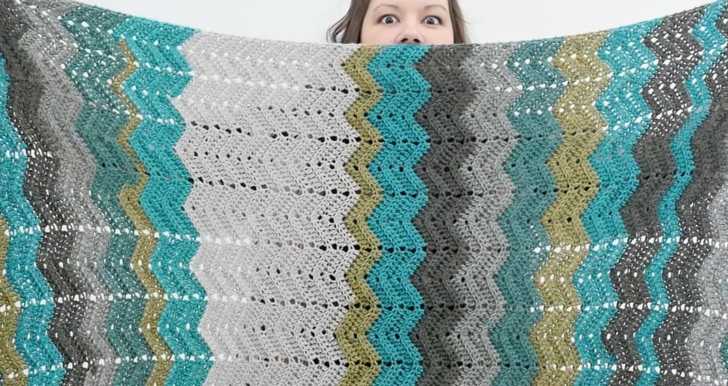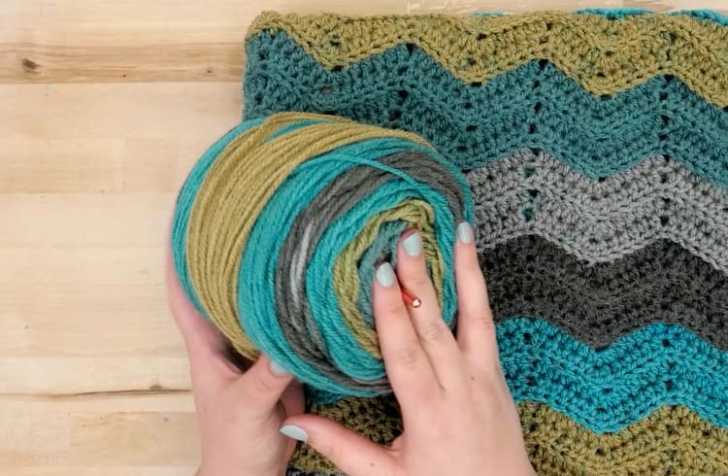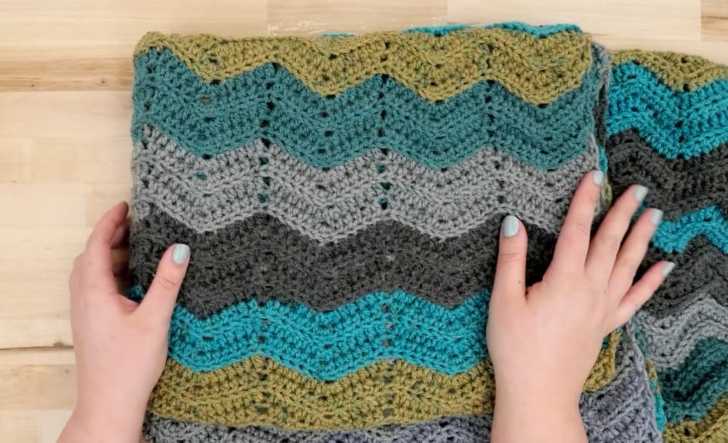Would You Believe This Stunning Blanket Only Uses One Stitch?
There are quite a few different ways to achieve this technique, but today we’re going to show you one of the simplest methods.

The chevron stripe has become super popular again, and it’s easy to see why. This chunky zig-zag pattern first became popular in the 70’s, and we’re seeing it pop up again in clothing, graphics, and of course, crocheting!
There are quite a few different ways to achieve this technique, but today we’re going to show you one of the simplest methods. The only stitch you need to know is the half double crochet! There are a few other techniques involved in creating the dimensions of the blanket, but don’t worry! We’ll walk you through every step of the way.

The easiest way to work a chevron stripe – or any pattern using stripes – is to get a skein of self-changing yarn. In the video below, I use the Caron Cakes yarn, but there are multiple brands of this style of yarn available. This way, you’ll only have to switch yarn when you run out of the skein, instead of every three or four rows.
The other techniques used in this pattern are single crochet two together, and crocheting in the back loop only. We’ll show you how to combine your first two stitches and last two stitches of each row for the sc2tog, as well as the difference between regular crochet and crocheting in the back loops.
Go ahead and watch how it’s done in the video below, and get the free pattern beneath the video!
Supplies:
– Caron Cakes yarn (or other worsted weight yarn)
– 5.5 mm hook
Special stitches:
– Sc2tog = single crochet 2 together
– HDC = half double crochet
– BLO = back loop only

Directions:
1. Chain 144 (Or any multiple of 13 + 1).
2. Row 1: In the 2nd chain from the hook, sc2tog. HDC next 4 stitches, *HDC 3 in the next stitch. HDC next 5 stitches, sk 2 stitches. HDC next 5 stitches, repeat from * till last 6 stitches. HDC next 4 stitches, sc2tog. Ch 1, turn.
3. Rows 2 – end of blanket: Repeat row 1, working all stitches in BLO. Fasten off, weave in ends.
SKM: below-content placeholderWhizzco for CRH

